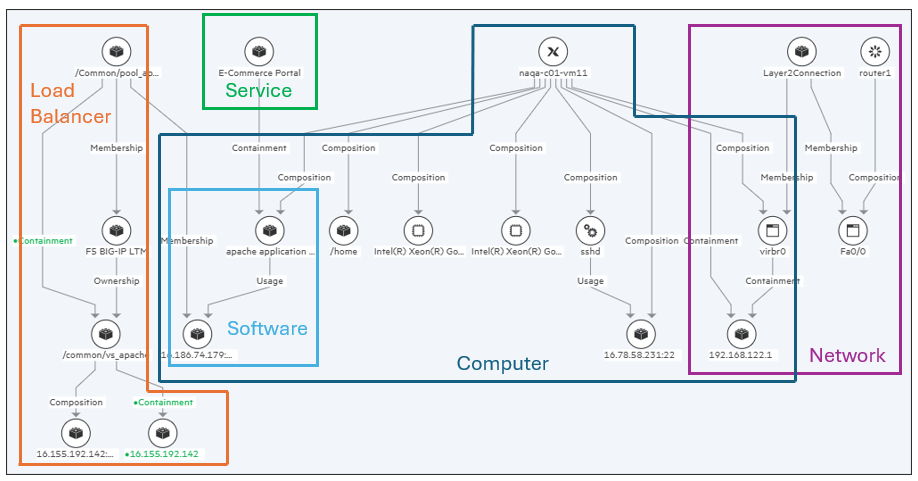
Ensuring an organization has a dependable backup and disaster recovery program (BDR) in place is an important responsibility of an IT operations team to maintain business continuity. Therefore, practices and tools must be in place to ensure, at the very least, that mission-critical data and systems can be restored to operation as soon as possible. One effective tool that is often overlooked in BDR efforts is a CMDB.
BDR is a source of sleepless nights for IT professionals. One survey reported that only 40% of IT professionals were confident in their backup systems, while another 30% had doubts about their backup strategy. These concerns and fears can be greatly reduced with the use of a CMDB, a tool that should already be a part of every organization’s daily IT operations.
What is CMDB?
A CMDB serves as a single source of truth for an organization’s software and hardware. It automatically collects hybrid IT asset data across multi-cloud containers and on-premises IT. CMDBs can also store detailed information about resources, such as hardware configurations, software versions and libraries, topology maps and facility layouts. They help teams assess change risks, troubleshoot problems between interdependent configuration items, improve security and optimize software costs.
Why CMDB is a Good Fit for BDR
When an organization experiences unplanned downtime, the goal should not be to merely to regain access to data and systems; rather, IT teams should strive to restore systems and return to normal or near-normal operations as quickly as possible. To achieve this, an accurate record of the IT infrastructure is necessary, and this is where having a CMDB in place proves advantageous.
A CMDB already exists in many IT environments as part of the foundation of IT operations, making it ideal for inclusion in backup and recovery planning. It can contain detailed attribute information about each configuration item, including its history, location, owner, function and relationship to other assets.
The benefits of a CMDB are not limited to post-disaster activities. It can also be used for BDR planning. With its comprehensive catalog of content, it can offer a clear picture during planning of the systems and applications necessary to restore normal operations and provide a checklist for rehearsals and plan activation.
One more point that can’t be emphasized enough is whether or not an organization includes it in BDR planning and implementation, a CMDB and its contents are items that need to be covered by the backup recovery strategy.
How IT Discovery Enhances CMDB and BDR
Of course, the overall effectiveness of a CMDB — whether in everyday operations or in BDR planning and implementation — depends heavily on the quality of information it stores. Automated IT discovery can significantly enhance success in these areas.
IT discovery is the process of identifying, collecting and organizing information about all the components in an organization’s IT environment. The result is an accurate, timely view of the IT infrastructure and software. With this knowledge, IT teams can better focus BDR planning by determining the priority of systems and identifying related components needed to restore normal operations.
However, organizations must first adopt an IT discovery tool that fits their specific needs. Some tools only work with certain systems, which may be suitable for organizations that rely primarily on solutions from a single vendor.
Adding a layer of complexity to the process, many companies use software and hardware from multiple vendors, often requiring more than one IT discovery tool. In such cases, it is wise to utilize a universal IT discovery tool that integrates with a wide range of systems from multiple vendors. This type of tool enhances efficiency and reduces costs by minimizing the number of resources needed for data collection. It can also iterate scans more frequently, ensuring that recent changes are captured. In addition to supporting targeted BDR planning, the right IT discovery tool helps organizations reduce service disruptions, improve change success rates and enhance overall IT operations efficiency.
Figure 1: IT Discovery Results for Server “naqa-c01-vm11”
For example, Figure 1 represents a server and its inventory, along with its connection to a network router; the software running on that server and its associated ports; the business application to which the software belongs; the load balancing configuration that enables high availability. All of this content was collected through a single universal IT discovery tool, automatically providing the information necessary to rebuild the server should it become unavailable.
The End Game
Unfortunately, it is almost certain that an organization will lose access to data and systems, especially as systems and networks become more interdependent and complex, and threats continue to rise. Therefore, BDR planning is a necessity, and the knowledge and capabilities a CMDB provides are key components of any BDR strategy. Incorporating a CMDB gives a confidence boost to IT professionals responsible for restoring business continuity after a disaster.


